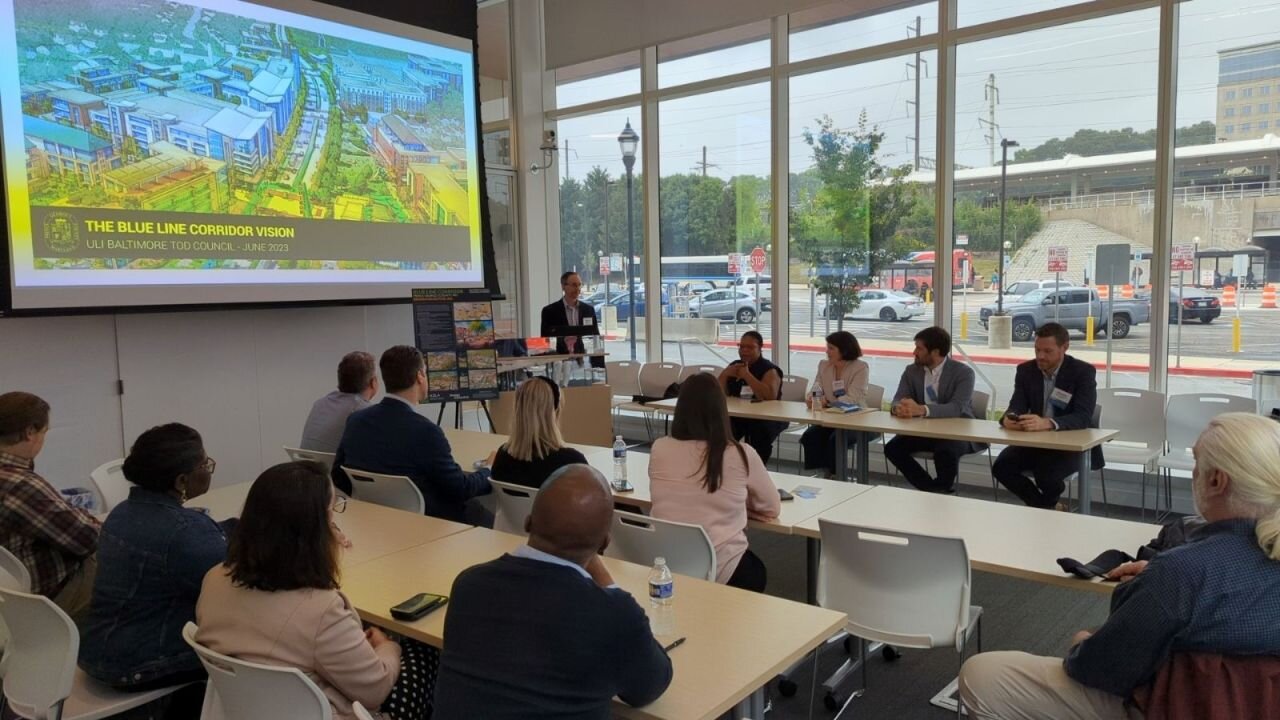In our rapidly evolving urban world, the significance of strategic and sustainable development cannot be overstated. This sentiment took center stage at the recent ULI Baltimore Transit-Oriented Development (TOD) Product Council’s summer meeting, where Michael J. Workosky (serving as Co-Chair of the Product Council along with Greg Fitchitt) moderated a panel of experts that included:
- Angie Rodgers – Deputy Chief Administrative Officer for Economic Development for Prince George’s County Executive Angela Alsobrooks
- Steven Segerlin – Director of Real Estate Development & Station Area Planning for the Washington Metropolitan Area Transit Authority (WMATA)
- Jared Press – HR&A Real Estate Advisors
- Mackenzie Twardus – Design Collective Architects
The spotlight was on the promising Blue Line Corridor (BLC) and its potential to reshape Prince George’s County.
Exploring the Blue Line Corridor
The gathering revolved around the promising future of the Blue Line Corridor – a transportation and development axis. Attendees actively discussed the corridor’s history, its alignment with the County Executive’s goals, job growth and investment, and the distinctive assets and development potential of each station: Capitol Heights, Addison Road-Seat Pleasant, Morgan Boulevard, and Downtown Largo.
Addressing Challenges of the BLC
No endeavor is without its challenges, and the BLC project is no different. The council candidly discussed the challenges that the project faces, from navigating bureaucratic hurdles to addressing connectivity issues, placemaking, private investment, the real estate market, and community concerns.
Navigating WMATA’s Stakeholder Role
A critical player in the BLC’s future is the Washington Metropolitan Area Transit Authority (WMATA). The council acknowledged the stakeholder role of WMATA and its 10-Year Strategic Plan that prioritizes infrastructure investments and coordination with jurisdictions. This recognition emphasized the collaborative nature of urban development – a symphony of efforts from various stakeholders working towards a harmonious future.
Moving Towards a Transit-Oriented Future
As the meeting concluded, the utilization of over $400 million in awarded funding was highlighted as a catalyst for the corridor’s growth and development. The council outlined a roadmap that integrates thoughtful planning, community engagement, and a dedication to the principles of transit-oriented development.
As we look to the future, it is the dedication of visionary leaders like Michael Workosky and the commitment to collaborative partnerships that will help shape the cities of tomorrow.

